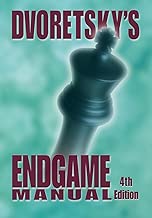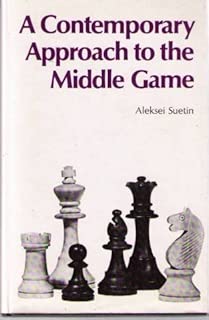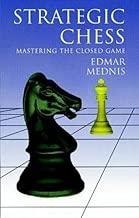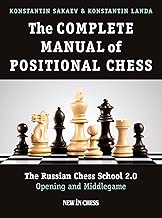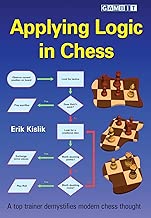Tips for applying effective chess training techniques, according to Mark Dvoretzky (the best coach in recent history).
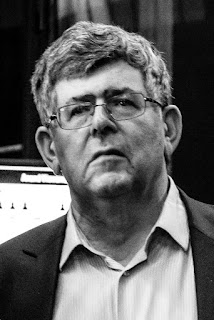 |
Mark Dvoretzky wikipedia |
One of the most important aspects of the life of every chess player with a little ambition is training. Constant overcoming has always been the engine that keeps the player running. Training, as in any other sport, requires patience, discipline and a strong willingness to work hard.
According to the famous chess coach Viktor Goncharov, today's chess training methods have multiple and serious flaws.
The most significant is probably the inability of chess coaches (very strong chess players) to understand the difficulties that their students are facing when they study chess.
Due to their own high level of chess, they make assumptions based on their own chess ability, which does not always translate directly into their student-players, which makes the educational process more difficult. In simple terms, not every strong chess player is able to teach one to become a strong player.
Another problem, according to Goncharov, is closely related to the absence of adequate materials to teach chess coaches how to train amateur players.
Finally, any chess exercise must have a meaning that must go beyond simply finding a solution. The student needs to understand the point of that exercise, capture the main idea and be able to apply it in their own chess games. Otherwise, knowledge is useless. The main objective of a student is to change their thinking process and be able to start using common chess algorithms to help in the decision making process. The main question is how to do it.
Mark Dvoretsky suggests three training methods that can help achieve this goal.
See Mark Dvoretsky's chess books on Amazon
See Mark Dvoretsky's chess books on Amazon
TAKE THIS COURSE
Method 1. "Guess a Movement" Approach
TAKE THIS COURSE
This method was used by many teachers and great teachers, including Bronstein, Gort and Nimzovich himself. The idea is to find a well-written chess game and start guessing the plays right after the opening for one of the players.
You should also write down your thoughts and compare them with the scorer's analysis at the end of the game. Based on this comparison, you can draw a conclusion about your own understanding of the game. This training approach can help you greatly improve positional vision.
It will also ensure that you really understand the game you are studying to a much greater extent than if you simply flip through the movements and read the notes, without applying.
Method 2. Practice the final game.
TAKE THIS COURSE
To improve the final game, it is necessary to practice in conditions that simulate real games. First, Dvoretsky suggests thinking about the position on the board for a few minutes. Then, the position must be played against a sparring, coach or a chess engine.
The key to this exercise is to choose significant positions to be analyzed and then played against a human or a computer opponent. By significant positions, Dvoretsky refers to those that are common in chess and have a clear way to achieve a victory or a draw.
Method 3. Analysis algorithm
TAKE THIS COURSE
Sometimes it is difficult for amateur chess players to evaluate a complex chess position. To simplify this task, Dvoretsky suggests removing all black pieces from the board and focusing only on the white pieces at the beginning. The analysis should be done from left to right and the position should be evaluated according to the importance of the pieces. First the position of the King is taken into account, then the Queen, the Tower, etc.
Next, the white pieces are removed from the board and only the black pieces are placed. The position is evaluated analogously to the previous step, but only for black pieces.
Finally, both white and black pieces are placed and the analysis is done by comparing the sides, to identify which side has an advantage. This technique is called a "ladder" technique because first, we focus only on the white pieces, then only the black pieces and finally we go to the full position.
In addition to these 3 advanced training methods suggested by Dvoretzky, we suggest a series of additional advanced chess training techniques.
Solve studies or artistic compositions of chess.
Solving studies is difficult, it is very difficult ... However, you would not believe how good it is for your chess skills. It greatly improves visualization and imagination. Most studio composers were also strong players with a passion for beauty in chess and a great imagination.
See more chess problem books on Amazon
See more chess problem books on Amazon
Study the games of books and magazines mentally, without a board.
We learned this directly from a GM who told us he used to read commented games without a board when preparing for a tournament. Do your best to do it accurately, without losing focus and keeping in mind a clear picture of each position. It's a challenge.
Analyze your own games.
This is a well known advice, but very underrated. His games are the black box of his chess. Everything you need to know is there. Your mistakes, your virtues and defects. You must learn from them and seek improvement. Here is a complete tutorial for game analysis.
Intensively train the end of game technique.
For a moment let's put the theory aside and test the practice against a partner or your coach. For example, now that you have read the theory of how to use the pair of bishops, mount the board with a typical pawn structure or even the 8 pawns and play a game with the two bishops against the bishops and the knight and start sharpening your abilities. Try it with different endings.
Study the game of the Great Masters.
This will help you develop your intuition. By paying attention to the decisions made and trying to understand the movements played, you can do the same in your own games.
Practice your opening lines playing training games.
Many people review their annotations or theory manuals over and over again, but almost never take the time to "play with them" and check when they will run out of memory. Try to play your memory lines on the board, you may discover that you need to memorize them better.


